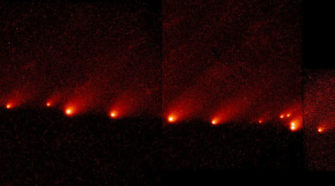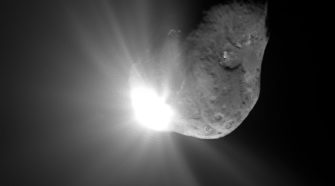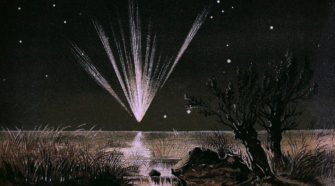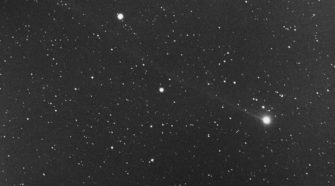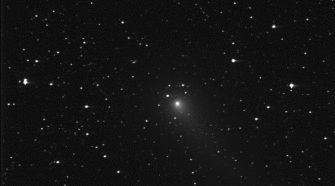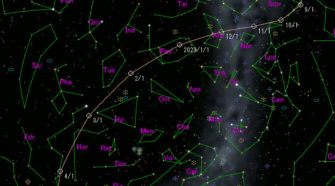Comet
Comet of the Week: Shoemaker-Levy 9 1993e
Perihelion: 1994 April 18.57, q = 5.380 AU What could perhaps be considered the most successful search program for comets and near-Earth asteroids during the photographic era, i.e., before the advent of CCD-based comprehensive survey programs in the late 1990s, was conducted by renowned planetary geologist Eugene Shoemaker from 1982 to 1994. Usually once a …
Comet of the Week: 9P/Tempel 1
Perihelion: 2005 July 05.31, q = 1.506 AU With the various comprehensive survey programs that are currently operational, the discovery of previously-unknown short-period comets happens all the time these days. The situation was very different during the mid-19th Century, when only a handful of such objects were known, and the discovery of each one was …
Comet of the Week: Tebbutt 1861 II
Perihelion: 1861 June 12.01, q = 0.822 AU Two of the brighter comets of the latter half of the 19th Century were discovered by an Australian amateur astronomer, John Tebbutt, who for four decades essentially ran a one-man astronomical clearinghouse from his private observatory near Windsor, New South Wales. In addition to numerous astrometric observations …
Comet of the Week: 2P/Encke
Perihelion: 2020 June 25.85, q = 0.337 AU In the early 19th Century the idea that comets might return to the inner solar system on a regular basis was still a bit of a novelty. This had been successfully demonstrated by the British astronomer Edmond Halley when the comet that now bears his name returned …
Comet of the Week: LINEAR C/2001 A2
Perihelion: 2001 May 24.52, q = 0.779 AU At the beginning of the 21st Century the discovery of comets and near-Earth asteroids was dominated by the first of the comprehensive sky surveys, the LIncoln Near-Earth Asteroid Research (LINEAR) program run by MIT’s Lincoln Laboratory and based at White Sands Missile Range in New Mexico, that …
Comet of the Week: PANSTARRS C/2017 K2
Perihelion: 2022 December 19.67, q = 1.797 AU I’ve hinted in some of the earlier presentations of “Ice and Stone 2020” that, for the past few years, we have been in a slow period when it comes to bright comets. Indeed, for “Great Comets” – discussed in a previous “Special Topics” presentation – the most …

